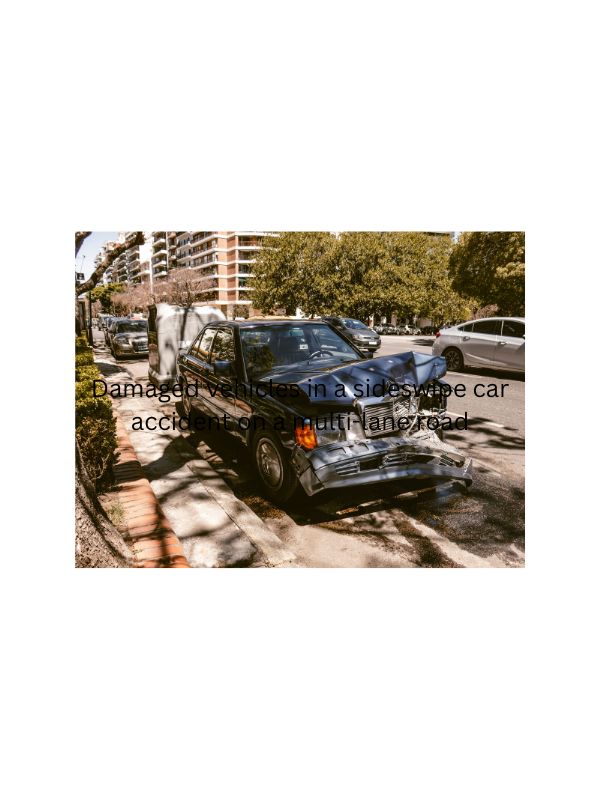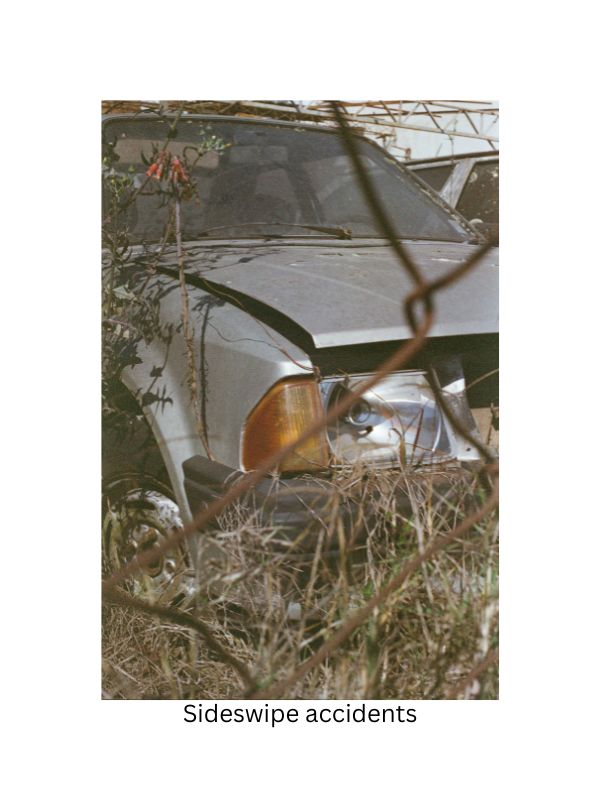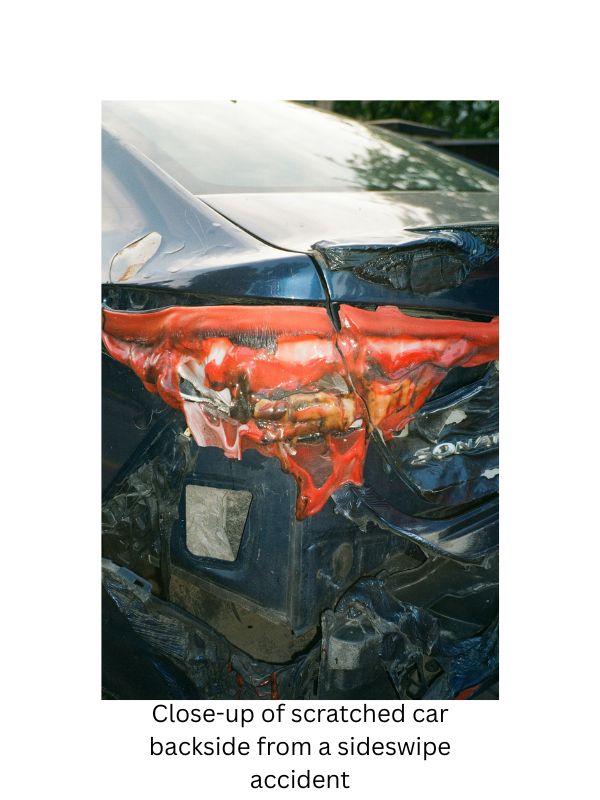Who Is at Fault in a Sideswipe Accident?
Essential Insights for Drivers, Legal Experts, and Road Safety Enthusiasts
Introduction
Sideswipe accidents rank among the most frequent yet misunderstood types of vehicle collisions on today’s busy roads. These incidents, where the sides of two vehicles brush or collide while moving parallel, often stem from momentary lapses in attention or poor driving decisions. For drivers and vehicle owners navigating daily commutes, understanding fault in a sideswipe car accident can mean the difference between a smooth insurance claim and a prolonged legal battle.
Insurance professionals and legal experts frequently encounter these cases, where determining liability hinges on nuanced evidence. Driving instructors and students can use this knowledge to emphasize safe lane-changing techniques, while law enforcement officers rely on it to accurately document scenes. Even the general public with an interest in road safety, or those recently involved in a sideswipe accident, benefit from grasping these details to promote safer highways.
In this comprehensive guide, we delve into the intricacies of sideswipe accidents, exploring common causes, fault determination, real-world scenarios, and pathways to fair sideswipe accident settlements. Drawing from expert insights and recent data, we’ll equip you with actionable advice to handle or avoid these collisions. Remember, while this article provides valuable information, it is not a substitute for personalized legal counsel—consult an accident attorney for specific guidance.
What Constitutes a Sideswipe Accident?
A sideswipe accident occurs when two vehicles traveling in the same or opposite directions make lateral contact, often resulting in scraped paint, dented panels, or more severe damage if speeds are high. Unlike rear-end or head-on crashes, sideswipe accidents typically involve vehicles that are adjacent, such as on multi-lane highways or during merges. These collisions can escalate quickly; a minor brush might cause a driver to overcorrect, leading to rollovers or multi-car pileups.
Statistics highlight the prevalence of sideswipe accidents. According to recent reports, sideswipe collisions accounted for a notable portion of urban crashes in 2024, with thousands reported in major cities like Nashville alone. In 2025, as traffic volumes rebound post-pandemic, experts predict a slight uptick in these incidents, underscoring the need for vigilance. For people recently involved in a sideswipe accident, recognizing the type of crash is the first step toward assessing fault and pursuing compensation.
Sideswipe accidents differ from other crashes in their subtlety—damage might not immediately reveal the at-fault party, making evidence collection critical. Legal professionals often note that these cases require thorough investigation, as initial police reports may not capture the full picture.
Common Causes of Sideswipe Accidents 
Drivers trigger most sideswipe accidents through preventable errors. Distracted driving tops the list: glancing at a phone or adjusting the radio can cause a vehicle to drift into an adjacent lane. Improper lane changes follow closely, where a motorist fails to signal or check blind spots before merging. Other culprits include impaired driving from alcohol, drugs, or fatigue, which impairs reaction times and spatial judgment.
External factors play a role too. Slippery roads from rain or ice contribute to unintentional drifts, while poor road design—like narrow lanes or inadequate signage—exacerbates risks. In high-traffic areas, aggressive driving behaviors, such as tailgating or speeding during merges, heighten the chances of a sideswipe car accident.
For insurance professionals, these causes inform policy adjustments and risk assessments. Law enforcement officers investigating sideswipe accidents often look for signs of these behaviors in dashcam footage or witness statements. Driving instructors teach students to anticipate such hazards, emphasizing defensive driving to mitigate them.
Determining Who Is at Fault in a Sideswipe Car Accident 
Establishing fault in a sideswipe Car accident revolves around identifying the negligent party—typically the driver who deviates from their lane or violates traffic rules. Traffic laws mandate that motorists maintain their lane unless it’s safe to change, granting right-of-way to those already established in a lane. Thus, the driver initiating an unsafe merge or drift usually bears responsibility.
However, fault isn’t always absolute. In comparative negligence states, both parties might share blame if each contributed—for instance, one drifts while the other speeds excessively. In contrast, pure contributory negligence jurisdictions might bar recovery if you’re even slightly at fault. Legal professionals analyze elements like vehicle positions, damage patterns, and electronic data from black boxes to build cases.
Proving fault demands solid evidence. Eyewitness testimonies provide unbiased perspectives, while dashcam videos offer irrefutable proof. Without such, damage alone rarely suffices, as scrapes can appear similar regardless of who initiated contact. For those recently in a sideswipe accident, consulting an accident attorney early ensures evidence preservation.
External resources like the National Highway Traffic Safety Administration (NHTSA) offer guidelines on fault determination—visit NHTSA’s crash investigation page for more.
Exploring Common Sideswipe Accident Scenarios 
Sideswipe accident scenarios vary, but several recur frequently. One classic involves lane changes: A driver switches lanes without checking mirrors, clipping a vehicle in the blind spot. Fault here lies with the changing driver for failing to ensure safety.
Merging onto highways presents another common setup. The merging vehicle must yield, so if it sideswipes an established driver, the merger is typically liable. Conversely, if the highway driver drifts or blocks the merge aggressively, shared fault might apply.
Drifting due to distraction forms a third scenario, where a vehicle veers into another’s lane on a straight road. The drifter assumes fault for not maintaining control. In urban settings, sideswipes during turns or at intersections occur when one driver cuts too sharply.
For driving instructors and students, role-playing these sideswipe accident scenarios in training builds awareness. Law enforcement officers document them to prevent recurrences in high-risk areas.
Navigating Sideswipe Accident Settlements
Securing a fair sideswipe accident settlement requires demonstrating negligence and quantifying damages. Average settlements vary widely, ranging from $5,000 for minor property damage to over $50,000 for injuries like whiplash or concussions. Factors influencing amounts include medical bills, lost wages, pain and suffering, and vehicle repair costs.
Insurance companies often lowball initial offers, so negotiating with evidence strengthens your position. In severe cases, lawsuits might yield higher payouts, especially if fault is clear. For insurance professionals, understanding these dynamics aids in fair claim processing.
People recently involved in a sideswipe accident should track all expenses and seek medical evaluations promptly. An accident attorney can maximize settlements by leveraging expert witnesses or accident reconstructions..
Steps to Take After a Sideswipe Accident 
Immediate actions post-sideswipe accident safeguard your health and legal standing. First, ensure safety by moving vehicles off the road if possible and activating hazard lights. Check for injuries and call emergency services.
Document everything: Photograph damage from multiple angles, note road conditions, and exchange information with the other driver. Gather witness contacts—their accounts can prove pivotal. File a police report, even for minor incidents, as it creates an official record.
Notify your insurer promptly but avoid admitting fault. Seek medical attention, as symptoms like neck pain might emerge later. Finally, consult an accident attorney to navigate claims and potential disputes.
General public interested in road safety can share these steps to empower others.
People Also Read : https://attorneywala.com/truck-accident-lawyer-midland/
Tips for Preventing Sideswipe Accidents
Prevention starts with proactive habits. Always check blind spots before changing lanes—use mirrors and shoulder glances. Signal intentions early to alert others.
Maintain safe distances, especially in merges, and avoid distractions like phones. On highways, anticipate merging traffic and adjust speed accordingly. Defensive driving—scanning ahead and anticipating errors—reduces risks.
For vehicle owners, equip cars with blind-spot monitors or dashcams. Driving instructors incorporate these tips into lessons, while law enforcement promotes them through campaigns.
Explore AAA’s safe driving resources for additional prevention strategies.
Conclusion
Sideswipe accidents disrupt lives, but understanding fault empowers drivers, legal professionals, and safety advocates to respond effectively. The at-fault party usually is the one who unsafely leaves their lane, but scenarios and evidence dictate outcomes. From common causes to settlement pursuits, knowledge protects your rights.
If you’ve faced a sideswipe car accident, don’t navigate alone—reach out to an experienced accident attorney today. Safe roads benefit everyone; drive responsibly and stay informed.
If you’ve experienced a sideswipe accident, consider reaching out to a local attorney for personalized guidance. Drive safely!
Disclaimer : This article is for informational purposes only and not legal advice. Laws vary by location, so consult professionals for specific case.





